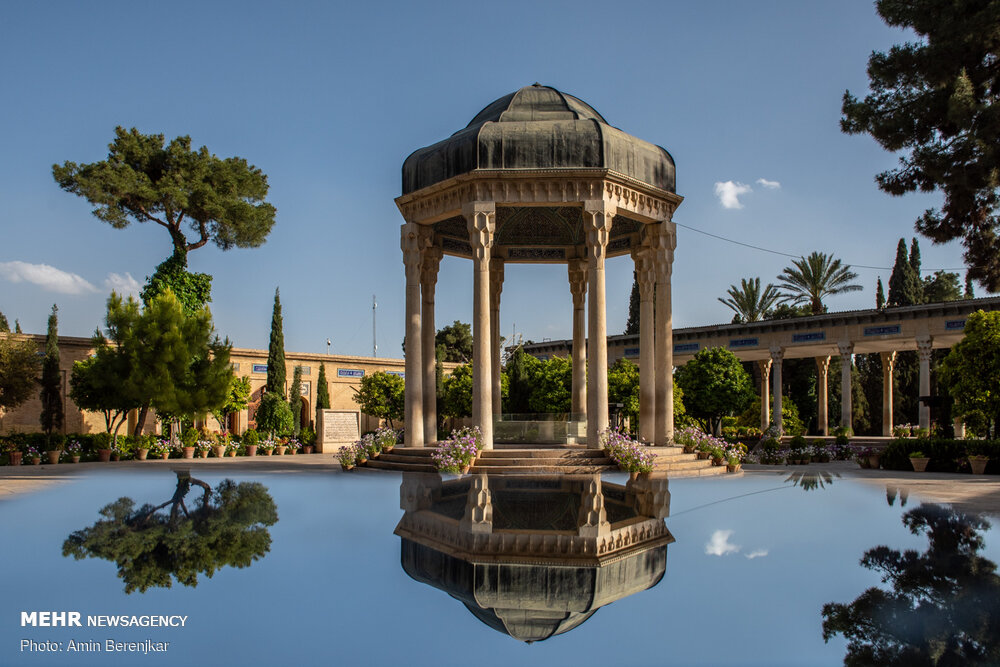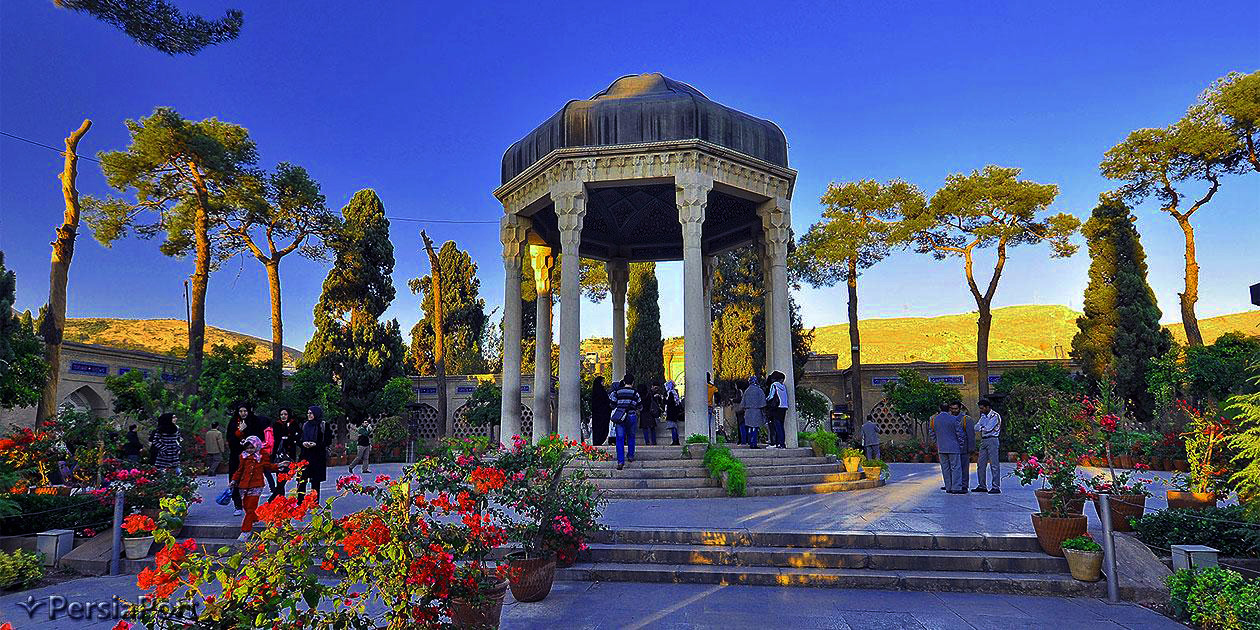National Day of Hafez Shirazi
Published: October 11, 2020

This year October 11 is honored as Hafez Day in Iran to commemorate Shams al-Din Mohammad Hafez-e Shirazi, better known as ‘Hafez’, the 14th-century lyric poet of Persian classical literature.
Shams al-Din Mohammad was born sometime between the years 1310-1337, in Shiraz, in Fars province, the city which is known as the city of love, poetry, and civilization.
He memorized the Holy Quran by listening to his father’s recitations at an early age, thus he is called ‘Hafez’ (which literally means ‘one who has memorized’ [the Holy Quran]).
Hafez is regarded as the most influential Persian poets of all time. It can be said that he is one of the most beloved poets among Persians.

The great poet is primarily remembered for his lyrical poetry written in ghazals, a difficult and uniquely Persian verse-form. Prior to Hafez, ghazals were primarily used to write songs celebrating earthly pleasure. He revolutionized the form by utilizing the stock symbol of pleasure as a metaphor for spiritual experience. In so doing, Hafez elevated his short, simple verses to the level of high art. A devoted Sufi, Hafez’s poetry advocated abandoning all restraints and preconceptions so as to come into direct contact with the spiritual realm.
His poems use love as a metaphor for the kind of transcendental passion felt by the devout in search of the divine.
There is no definitive version of his collected works (or divan); editions vary from 573 to 994 poems. However, since the 1940s a sustained attempt has been made by some Iranian scholars to authenticate Hafez’s works and remove errors introduced by later copyists and censors.
Here is this first Ghazal of Hafez’s Divan as translated by Ali Salami in his book titled ‘The Selected Poems of Hafiz’ published in 2016:
As a result of his mystical and profoundly transcendent subject-matter, Hafez has become an inspiration for poets of all cultures. In Iran, even though his works are nearly 700 years old, Hafez continues to be immensely popular.
Iranian families usually have a Divan of Hafez in their house, and when they get together during the Nowruz (New Year) or Yalda night, they open the Divan to a random page and read the poem on it, which they believe to be an indication of things that will happen in the future.
The world-renowned vocalist Sharam Nazeri performing Hafez’s poem in his concert in Paris.
Many Iranian composers have composed pieces inspired by or based upon Hafez’s poems. Among Iranian singers, the late maestro Mohammad-Reza Shajarian, vocalist Sharam Nazeri, and the late singer Iraj Bastami performed one of his famous poems with music by Parviz Meshkatian.
Hafez’s poems have been translated into different languages and his art of poetry has been appreciated by many knowledgeable figures.
Hafez’s poems were translated into English by William Jones in 1771 and they influenced Western writers and philosophers such as Ralph Waldo Emerson and Goethe.
Ralph Waldo Emerson, one of America’s best-known and best-loved 19th-century figures, translated some 700 lines of Persian poetry, nearly half of them from the work of the Sufi poet, Hafez. Emerson discovered a close affinity between the views of the Sufi poets of Iran and his own thinking. Comparing Hafiz with some leading Western poets, Emerson pointed out Hafiz’s more mystical attitude towards nature. He wrote: “Hafiz is the prince of Persian poets, and in his extraordinary gift adds to some o the attributes of Pindar, Ansacreon, Horace, and Burns the insight of a mystic, that sometimes affords a deeper glance at Nature than belongs to either of those bards. He accounts for all topics with an easy audacity.”
The German poet and philosopher, Johann Wolfgang von Goethe (1749–1832), came across a translation of Hafez when he was about 65 years old. He wouldn’t have written the prestigious West-Eastern Divan without being inspired by Hafez.
Some assert that Hafez “remains the most untranslatable of all Persian poets because the meaning of his verses is so perfectly molded with the formal expression of the Persian language with its particular prosody, symbolic imagery, and music that it is hardly possible to disentangle the meaning in order to express it in another language and medium.”
Hafez died in 1390 at the age of 69. Twenty years after his death, a tomb, the Hafezieh, was erected to honor Hafez in the Musalla Gardens in Shiraz. The current mausoleum was designed by André Godard, a French archeologist, and architect, in the late 1930s, and the tomb is raised up on a dais amidst rose gardens, water channels, and orange trees.
His tomb has remained a popular tourist destination, with millions of Persians and other visitors making the pilgrimage to Hafez’s tomb each year.
This year under the pandemic, the commemoration ceremony of Hafez will be held online. On the occasion of the Hafez Day, Hassan Bolkhari, the director of the Iranian Society of Cultural Works and Luminaries, will be making a speech about the popular Persian poet in an online program, which will be available on the Instagram page of the society. / MNA /
Reported by Haniyeh Sadat Jafariyeh
